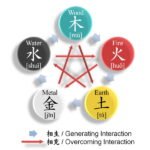Samsung Electronics semiconductor manufacturing complex under construction in Pyeongtaek, Gyeonggi Province (Photo by Hyuk Choi)
Samsung Electronics Co. and SK Hynix Inc., the world’s two largest memory chipmakers, are expanding their dynamic random-access memory businesses as the global DRAM market is expected to exceed the foundry sector thanks to the rapid growth in artificial intelligence.
Samsung, the global memory chip leader, decided to first build the PH3 production line for DRAM and other components in its semiconductor manufacturing complex in Pyeongtaek, Gyeonggi Province, South Korea while suspending the construction of a foundry clean room, industry sources in Seoul on Monday.
The factory is expected to produce DRAM chips for high-bandwidth memory (HBM) chips, which will be equipped in Advanced Micro Devices Inc.’s (AMD) AI accelerators, those sources said. An HBM is made by stacking advanced DRAM chips.
“Samsung is first installing equipment for DRAM production at the P4,” one of the sources said, referring to its fourth semiconductor complex in Pyeongtaek.
MORE INVESTMENTS
The company’s capital expenditures for DRAM, excluding spending on building construction, are expected to grow 9.2% to $9.5 billion in 2024, the largest since 2020, according to Citigroup. The capex is likely to increase further to $12 billion in 2025.
SK Hynix, which had cut output last year, was poised to more than triple spending on DRAM chips to $7.1 billion this year from $2.3 billion in 2023. The investments in the sector will rise further to $10.5 billion next year.
“About 65% of memory chip investments will be spent on DRAMs,” said Peter Lee, co-head of Citi’s global tech & communications. “Much will be set aside for high-value-added DRAMs such as HBMs.”
The global memory chip market is growing. The industry, which includes DRAM and NAND flash chips, was forecast to nearly double to $175 billion this year, topping the foundry industry of $120.3 billion dominated by Taiwan Semiconductor Manufacturing Co., according to industry analysis firms Omdia and Techinsights Inc.
The memory chip market is likely to exceed the $200 billion mark in 2025 with the DRAM market of $162 billion for the first time.
(Graphics by Dongbeom Yun)
Samsung and SK Hynix are set to invest billions of dollars to develop next-generation products such as processing in memory (PIM), which performs central processing unit (CPU) operation in memory, and computer express link (CXL), a unified interface that adds efficiency to accelerators, DRAM and storage devices used with CPUs and graphics processing units (GPUs) in high-performance server systems.
“Memory chips have grown faster than CPUs in the semiconductor industry history,” said Hwang Cheol-Seong, a professor at Seoul National University’s Department of Materials Science and Engineering, Hybrid Materials.
“Memory chips are expected to play various roles including computation to solve the problem of slowing performance due to the increase in data,” said Hwang, who led the Inter-University Semiconductor Research Center of the country’s top college from 2014 to 2015.
RISING CAPACITY
SK Hynix, the world’s No. 2 memory chipmaker, received a tempting offer from an AI accelerator maker earlier this year. The company asked the South Korean tech behemoth to establish a dedicated memory chip production line, saying it would make an advanced payment of more than 500 billion won.
SK Hynix turned down the offer as it needs to supply products worth over 1 trillion won to Nvidia Corp., the global No. 1 AI chip maker.
“That was an anecdote of the era of memory-centric computing amid the rapid growth in AI,” said an industry source in Seoul. Memory-centric computing aims to enable computation capability in and near all places where data is generated and stored.
SK Hynix HBM3E (File photo by SK Hynix)
Memory chipmakers are ramping up DRAM production volumes.
The global RAM capacity was forecast to grow to 1.8 million units a month this year and 1.9 million in 2025 from 1.5 million last year, according to industry tracker DRAMeXchange.
Such increases caused worries about oversupply, which memory chipmakers defied.
Bloomberg reported that 13 Big Tech companies in the US and China such as Google and Alibaba Group planned to invest a total of $226.2 billion in AI data centers this year, up 33.7% from 2023. Their investments were expected to grow 13.4% to $256.6 billion in 2025.
Most of the budget is likely to be spent on AI accelerators, keeping the DRAM market boom for a considerable time, industry sources said.
The prices of HBM, which is predicted to account for 26% of Samsung’s DRAM capacity and 28% of SK Hynix’s DRAM production as of the end of 2025, are five or six times those of double data rate 5 (DDR5) products, the latest general purpose DRAM chips. That will drive up the two South Korean chipmakers’ profitability.
Samsung and SK Hynix are predicted to enjoy operating profit margins of more than 40% this year, industry analysts said.
By Jeong-Soo Hwang, Chae-Yeon Kim and Eui-Myung Park
hjs@hankyung.com
Jongwoo Cheon edited this article.















